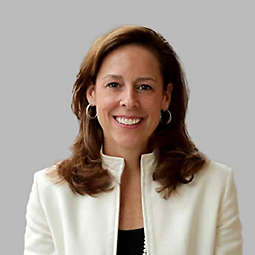Overview
Overview
NYLI WMC International Research Equity Fund seeks long-term growth of capital.
A core international holding
Seeks to provide a well-diversified, core international equity strategy for investors seeking long-term relative outperformance potential.
Diversified sources of alpha*
A blend of investment disciplines results in multiple potential sources of alpha and diversification across industry and style exposure.
High conviction ideas
Managed by Wellington’s Global Industry Analysts, featuring the highest conviction ideas from the team’s experienced sector and industry specialists.
Performance
Performance
Class A & INV: 5.5% maximum initial sales charge; a 1% CDSC may be imposed on certain redemptions made within 18 months of the date of purchase on shares that were purchased without an initial sales charge. Class C: 1% CDSC if redeemed within one year. Class I: No initial sales charge or CDSC.
Returns represent past performance which is no guarantee of future results. Current performance may be lower or higher. Investment return and principal value will fluctuate, and shares, when redeemed, may be worth more or less than their original cost. No initial sales charge applies on investments of $1 million or more (and certain other qualified purchases). However, a contingent deferred sales charge of 1.00% may be imposed on certain redemptions made within 18 months of the date of purchase on shares that were purchased without an initial sales charge. Expenses stated are as of the fund's most recent prospectus.
Effective March 5, 2021, the Fund replaced its subadvisor and modified its principal investment strategies. The past performance prior to that date reflects the Fund’s prior subadvisor and principal investment strategies.
Portfolio
Portfolio
Distribution & Yields
Distribution & Yields
Subsidized Yield: the yield of a fund that includes any fee waivers or reimbursements currently in place by the fund’s manager. This figure shows the income generated by the fund after accounting for reduced expenses, giving a more favorable representation of returns under current conditions.
Unsubsidized Yield: the yield of a fund that excludes any fee waivers or reimbursements. It reflects the income the fund would generate if the full expenses were charged, offering a view of returns without any temporary fee reductions.
Distributions may be comprised of ordinary income, net capital gains, and/or a return of capital (ROC) of your investment in the fund. Because the distribution rate and the 12-month rate may include a ROC, they should not be confused with yield or income. Please refer to the most recent Section 19 Notice, if applicable, for additional information regarding the composition of distributions. Final determination of a distribution’s tax character will be made on Form 1099 DIV sent to shareholders each January.
Distribution Rate: The distribution rate measures the percentage return in the form of dividends. It is calculated daily by annualizing the most recent dividend distribution and dividing by the daily share price (NAV or POP). If the Fund did not make a distribution as of the latest scheduled distribution date, "N/A" will be displayed.
12-month Rate: The 12-month rate measures the percentage return in the form of dividends. It is calculated monthly by taking the sum of the trailing 12-month dividend payments divided by the last month's ending share price (NAV or POP) plus any capital gains distributed over previous 12 months. If the Fund did not make any distributions over the previous 12 months, "N/A" will be displayed.
The 30 Day SEC Yield is calculated by dividing the net investment income per share for the first 30 days of the month by the offering price per share at the end of that period. The yield reflects the dividends and interest earned during the period, after the deduction of the Fund's expenses. Yield reflects a fee waiver and/or expense limitation agreement without which the 30 Day SEC Yield would have been lower.
Dividend distributions are the distribution of a dividend to mutual fund shareholders as of a certain date. The following Funds declare daily dividends: NYLI MacKay California Muni Fund, NYLI Floating Rate, NYLI MacKay High Yield Muni Bond Fund, NYLI MacKay U.S. Infrastructure Bond Fund, NYLI Money Market, NYLI MacKay New York Muni Fund, NYLI MacKay Short Term Muni Fund and NYLI MacKay Tax Free Bond.
Fees & Expenses
Fees & Expenses
Team
Team
A global asset manager with expertise and solutions across equity, fixed income, multi-asset and alternatives.
One of the world’s largest independent investment management firms, offering comprehensive investment capabilities built on rigorous, proprietary research spanning nearly all segments of the global capital markets, including equity, fixed income, multi-asset and alternative strategies.

Mary Pryshlak
Senior Managing Director

Jonathan White
Managing Director




